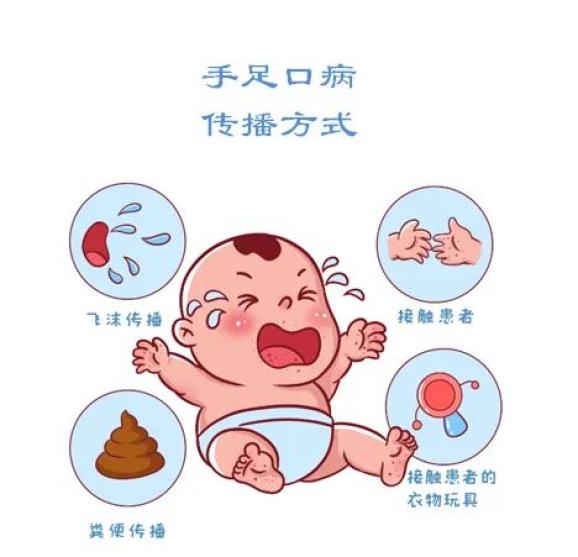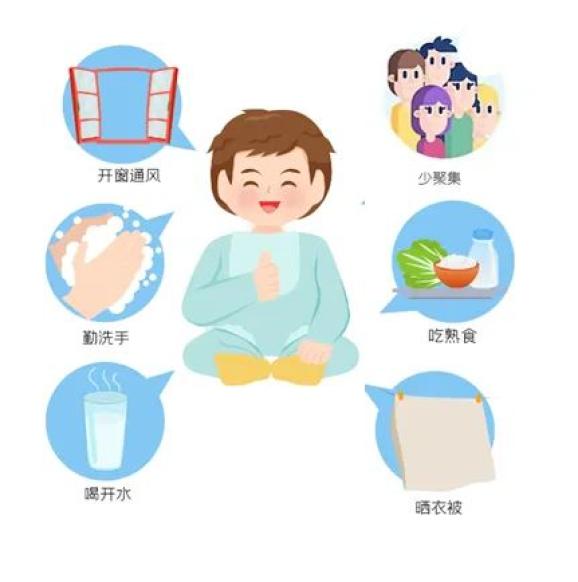China CDC Weekly recently released a survey on hand-foot-mouth disease virus, and Coxsackie virus A6 has become the main pathogen leading to severe cases of hand-foot-mouth disease in China. At present, Coxsackie virus A6 associated with severe hand, foot and mouth disease is evolving, and there is a risk of outbreak.
According to the research team, hand, foot and mouth disease is an infectious disease mainly caused by a variety of enteroviruses, which mainly affects infants and children. The symptoms are usually fever, oral ulcers and rashes, and the symptoms are generally mild and relieved within 7 to 10 days. However, some severe cases may have life-threatening neurological, respiratory or circulatory complications. Previously, enterovirus A71 was the main pathogen causing severe cases of hand, foot and mouth disease.
In 2016, inactivated enterovirus A71 vaccine was widely used, which significantly reduced the incidence of hand, foot and mouth disease caused by the virus. However, due to the lack of cross-protection between different enterovirus serotypes, the diversity of pathogens of severe hand, foot and mouth disease has changed.
According to the national laboratory monitoring network of hand, foot and mouth disease pathogens, the research team investigated the severe cases of hand, foot and mouth disease in China from 2012 to 2023, and obtained 74 strains of coxsackie virus A6 for analysis, and concluded that coxsackie virus A6 has become the main pathogen leading to severe cases of hand, foot and mouth disease in China. In addition, the virus related to severe hand, foot and mouth disease is evolving and there is a risk of outbreak. Therefore, it is necessary to strengthen the monitoring of severe hand, foot and mouth disease.
Among 74 severe cases of hand, foot and mouth disease related to coxsackie virus A6, 48 cases were male and 26 cases were female. The average age is about 2 years old, including 25 children under 1 year old, 26 children between 1 and 5 years old and 3 children over 5 years old. The research team said that the immune system of severe cases of hand, foot and mouth disease under 5 years old is immature, and if it cannot be diagnosed and treated in time, it may increase susceptibility and lead to serious complications and potentially fatal consequences. Therefore, the development of coxsackie virus A6 vaccine is very important to prevent severe hand, foot and mouth disease in susceptible children.
A little more news.
How is hand, foot and mouth disease spread?

Patients and recessive infected people are the sources of infection of hand, foot and mouth disease, and the proportion of recessive infection is large. Patients are contagious before onset, usually within 1 week after onset.
The route of transmission is diverse and easy to realize. The main mode of transmission is close contact, and infection is caused by direct contact with patients’ feces, herpes fluid, nasopharyngeal secretions and saliva, and contact with contaminated hands, towels, handkerchiefs, toothcups, toys, tableware, bottles, bedding and other items or environment. It can also spread through respiratory droplets, such as coughing and sneezing; Drinking or eating water and food contaminated by virus can also be infected.
How to prevent hand, foot and mouth disease?

(1) Avoid contact with children. Try not to hug, share toys, share tableware, toiletries, etc. with children to prevent cross infection.
(2) Maintain hand hygiene. Good hand hygiene is an effective measure to prevent hand, foot and mouth disease. Children should clean their hands after touching public goods, after going out to play, before eating, after going to the toilet, and after parents and caregivers go home, before processing food, after changing diapers or handling items contaminated by feces. Usually, you can wash your hands with soapy water or hand sanitizer. After contacting patients and pollutants, you should choose a chlorine-containing disinfectant with appropriate concentration to wash your hands.
(3) reduce aggregation. Crowd gathering and frequent contact are easy to spread hand, foot and mouth disease. It is suggested that children should not be taken to public places with crowded people and poor air circulation during the epidemic period of hand, foot and mouth disease.
(4) The environment is ventilated. Closed public places and rooms should be ventilated frequently to maintain air circulation.
(5) Cleaning and disinfection. Regular cleaning and disinfection of frequent contact parts, daily necessities and children’s toys; Milk utensils, tableware, etc. should be boiled and disinfected; Clothes and bedding are often dried in the sun or disinfected by ultraviolet light.
(6) vaccination. Although EV-A71 vaccine can not prevent other enterovirus infections, it can effectively prevent hand, foot and mouth disease and other related diseases caused by EV-A71 infection, and reduce the occurrence of severe hand, foot and mouth disease and death. In order to play a protective role as early as possible, children are encouraged to complete the whole vaccination before the age of 12 months. Vaccination is not recommended for children over 5 years old.

Editor | Gu Ying
Comprehensive | Beijing Daily Tianjin CDC China CDC

Continue to slide to see the next touch to read the original text.

Tianjin radio slides up to see the next one.
Original title: "Vigilance | Early warning of disease control: there is an outbreak risk of this virus! 》
Read the original text
关于作者